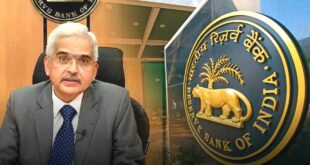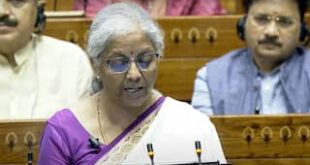Modi government gets breather with firm growth numbers

Virendra Singh Rawat
Economist Journalist
There is something to cheer about for the Narendra Modi government at the Centre on the economic front.
Cornered by the united opposition on the issue of demonetisation and the projected blip on Indian economy due to cash crunch and liquidity squeeze, the Modi regime can now take heart from the latest growth figures released by the Central Statistics Organisation (CSO) for third quarter (Oct-Dec) of the current 2016-17 financial year.
The CSO has pegged Q3 growth at 7.1 percent despite the headwinds of demonetisation and the epithet written by the opposition and some leading economists about the irreparable damage to Indian economy.
On the night of November 8, 2016, Modi, over a live televised address to nation, had announced the scrapping of high value currency notes bearing 1,000 and 500 denomination.
The decision was taken as a radical measure against black money, counterfeit tender, illegal trading, unaccounted cash economy, tax evasion etc. In one go, demonetisation effectively junked almost 85 percent of liquidity estimated at Rs 15 lakh crore, which was floating in economy in the form of currency. The decision has already completed 100 days.
Interestingly, the Q3 growth in the previous financial year 2015-16 was lower at 6.9 percent.
Besides, the CSO has estimated the growth during full financial year 2016-17 would be 7.1 percent, lower than 7.9 percent clocked in 2015-16.
However, skeptics point out that downward revision of growth numbers during Q3 of the previous year could have concealed the impact of demonetisation in Q3 of 2016-17 and instead returned firmer growth than actual.
Earlier, CSO had estimated the quarterly growth of Oct-Dec 2016 at 7 percent compared to 7.4 percent during the previous quarter July-Aug 2016.
Reserve Bank of India (RBI) had already downgraded growth forecast from the earlier 7.1 percent to 6.9 percent for 2016-17. However, the central bank is bullish on the Indian economy in coming quarters and forecast the growth rate of 7.4 percent in 2017-18.
Experts believe demonetisation could be a force multiplier for a more liberal and macro-integration of domestic economy.
The challenge for Indian policymakers is to prop up the sagging domestic economic sentiments and increase public and private investment to create jobs, increase income and consequently spur consumption of goods and services without spiking inflation rates and fueling fiscal deficit.
Demonetisation is also a precursor to the uniform tax regime Goods and Services Tax (GST), which is targetted to be implemented from July 2017.
 Politics Insight News Without Politics
Politics Insight News Without Politics





